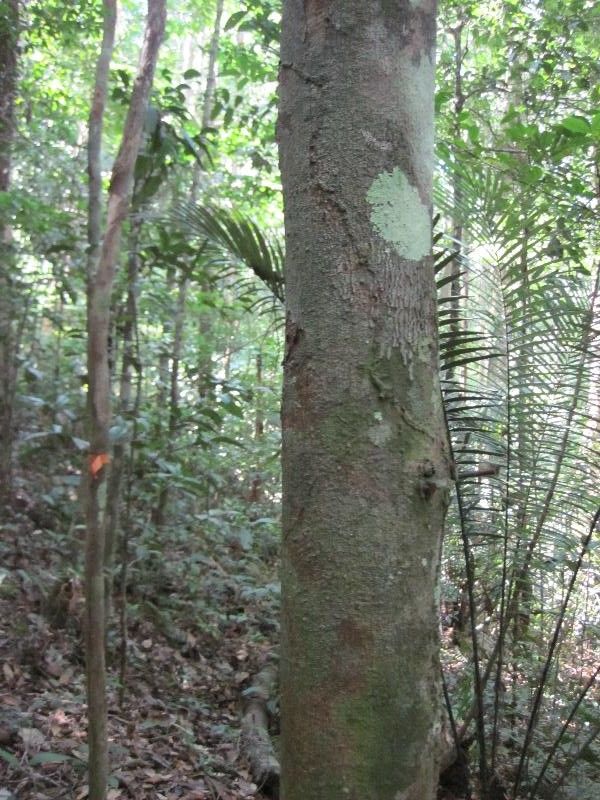Roundhead Bush Clover
lespedeza capitata
Also known as: ["Bush Clover","Round-headed Lespedeza"]
Overview
A perennial legume native to North America, known for its rounded clusters of small pinkish-purple flowers and ability to fix nitrogen in the soil.
Benefits & Perks
["wildlife attractant (bees, butterflies, birds)","drought tolerant","nitrogen fixing"]
Botanical Classification
| Phylum: | Magnoliophyta |
| Class: | Magnoliopsida |
| Order: | Fabales |
| Family: | Fabaceae |
| Genus: | Lespedeza |
| Botanical Name: | Lespedeza capitata |
Plant Characteristics
Basic Information
- Category: Flowers
- Suitable Location: open meadows, prairies, or sunny garden beds
- Suitable For:
- Is Weed: No
- Allergenicity: low
Environmental Needs
- Climate: {"temperatureRange":"–34–38°C"}
- Hardiness: {"zones":"3–8"}
- Misting: rarely required, only if ambient humidity is very low
- Drainage: Fast-draining to prevent root rot.
- Soil Type: Well-draining, loamy soil with organic matter.
Maintenance Level
- Maintenance Level: low
- Toughness Level: high
- Pruning Frequency: Annually in late winter or early spring.
- Pruning Intensity: Moderate; remove up to one-third of old growth if needed.
Care Details
Ideal Sunlight Coverage:
Full sun (6–8 hours of direct sunlight daily).
Sunlight Tolerance Tips:
Acclimate plants gradually to intense sunlight. Protect from harsh afternoon sun in hot climates. Ensure proper ventilation if grown indoors.
Care Requirements
Care Difficulty
easymoderate
Sunlight
full sun
Rotate plant for even light exposure; use shade cloth in extreme heat; avoid direct sun on leaves during peak hours.
Watering
every 7–10 days during growing season, reduce in winter
Water at the base of the plant, avoid overhead watering, and ensure soil dries slightly between waterings.
Soil
well-drained, sandy or loamy soil
pH: Slightly acidic to neutral (pH 6.0–7.0).
Ensure good aeration; avoid compacted soil; maintain consistent moisture.
Temperature
Prefers 65–85°F (18–29°C). Tolerates mild frosts but thrives in warm conditions.
Monitor temperature extremes; adjust watering; protect from sudden temperature shifts.
Fertilizing
every 3–4 months with balanced, slow-release fertilizer
Fertilize sparingly; apply before new growth emerges; water after fertilizing to distribute nutrients.
Propagation
Methods
Stem cuttings or seed propagation.
Step-by-Step Propagation Guide
- Take cuttings, apply hormone (if used), plant in medium, maintain humidity, and wait for roots.
Best Time: Late spring or early summer for cuttings; autumn for seeds.
Environment
Warm (70–75°F), high humidity, and partial shade.
Medium
Well-draining potting mix with perlite or sand.
Hormone
Optional, but rooting hormone can improve success rates.
Timeline
4–6 weeks for roots to develop; 3–6 months to establish a strong plant.
Tools Needed
Pruners, rooting hormone, pots, misting spray bottle.
Quick Tips
Use healthy, non-flowering stems; maintain consistent moisture; provide bottom heat if possible.
Pruning & Repotting
Pruning Guide
Method
Selective thinning and heading back to promote airflow and light penetration.
Pruning Plan
Prune to maintain shape, encourage bushier growth, and remove dead or diseased stems.
Tools
Pruning shears, loppers (for larger stems), gloves.
Checklist
Sterilize tools, prune dead/diseased wood, shape plant, clean up debris.
Repotting Guide
Best Season
Early spring before active growth begins.
Pot Size
Increase pot size by 2–3 inches in diameter.
Method
Remove plant gently, trim roots if crowded, place in new pot with fresh soil, water thoroughly.
Suggestions
Repot every 2–3 years or when roots fill the container. Necessary for container-grown plants to refresh soil and space.
Checklist
Check root bound status, prepare new pot, trim roots, add fresh soil, water well.
Advanced Care Tips
Watering Mastery
Watering Checklist
Check soil moisture, water deeply, ensure drainage, avoid wetting foliage.
How to Apply Water Properly
Water thoroughly until it reaches the root zone, ensuring even moisture distribution. Allow excess water to drain to prevent waterlogging. Water early in the morning to minimize evaporation.
Watering Schedule Tips
Water deeply once a week during the growing season, reducing frequency in winter. Adjust based on rainfall and soil moisture levels.
Soil Improvement
Add compost or aged manure for fertility; mix in perlite or sand for drainage.
Temperature Stress Management
Signs of Temperature Issues
Wilting, leaf scorch, or stunted growth in extreme heat; leaf drop or browning in cold stress.
Cold Stress
Slows growth, may cause leaf discoloration, and can lead to dieback in severe cases.
Solution: Mulch heavily around the base, move potted plants indoors, or provide frost cloth protection during freezes.
Hot Stress
Leaves may wilt, curl, or develop brown edges; flowering may be reduced.
Solution: Provide afternoon shade, increase watering, and use mulch to retain soil moisture.
Fertilizing Guide
Fertilizing Checklist
Check soil fertility, use balanced fertilizer, apply in spring, water after application.
Fertilizing Method
Use a balanced, slow-release fertilizer in early spring. Avoid over-fertilizing, as Lespedeza is generally low-maintenance.
Common Problems & Solutions
Toxicity Warning
Cats
Non-toxicLespedeza capitata is not known to be toxic to cats. There are no reported adverse effects from ingestion or contact.
⚡ Toxic If:
Not applicable
Dogs
Non-toxicLespedeza capitata is not known to be toxic to dogs. There are no reported adverse effects from ingestion or contact.
⚡ Toxic If:
Not applicable
Humans
Non-toxicLespedeza capitata is not known to exhibit toxic properties to humans. It is generally considered safe for consumption and handling.
⚡ Toxic If:
Not applicable
Frequently Asked Questions
Q: Is Lespedeza capitata suitable for dry conditions?
A: Yes, it is highly drought-tolerant and thrives in dry, sandy soils.
Q: Does this plant attract wildlife?
A: Yes, it is a valuable food source for birds and attracts pollinators like bees and butterflies.
Q: How should I propagate Lespedeza capitata?
A: It can be propagated by seed, sown in fall or early spring, or by division of established clumps.
Quick Reference
| Family: | Fabaceae |
| Care: | easy |
| Light: | full sun |
| Water: | every 7–10 days during growi |
Get Expert Care Tips
Download the Plantious app for personalized care reminders and plant identification!
Google Play App Store





